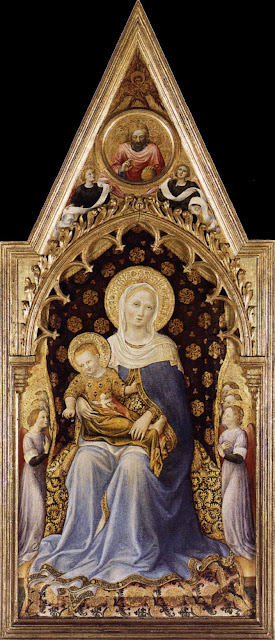 |
|
Masaccio, Madonna and Child, 1426, Egg tempera
on poplar, 136 x 73 cm, National Gallery, London.
|
There have probably been more books written about the period
that is known as the quattrocento (the 1400s, the fifteenth-century) than any
other period in the renaissance. In addition to the general surveys,
monographs, exhibition catalogues, patronage studies, there have been attempts
to re-capture the viewing experience of both painters and patrons in
quattrocento Florence. Concepts like Michael Baxandall’s “period eye” have
aided understanding of the pictures in their social and religious contexts. However,
one of the most important (and controversial) studies was Frederick Antal’s analysis
of social institutions and artistic style, his magnum opus published in 1948.[1]
Antal’s study diligently probed the links between the social hierarchy in
Florence, and the evolution of its art during the time of Giotto, Masaccio and
beyond. Forced into exile by the Nazis, and befriended by art historians like
Anthony Blunt, Antal had time and leisure to formulate his Marxist theories in
respect of Florentine art. Standing in front of two Madonnas by Masaccio and
Gentile di Fabriano in the National Gallery, London, Antal pondered what was to
be become the founding question to his book. Why were these two pictures,
painted only a year apart from each other, and in the same town, so radically
different in style? More importantly, what answer could Art History give to
this fundamental question?[2]
Using Antal as a framework, that question will be addressed in this session.
 |
|
Gentile di Fabriano, Quaratesi Polyptych: Virgin
and Child, 1425, Egg tempera on poplar, 140 x 83 cm, National Gallery, London.
|
No comments:
Post a Comment